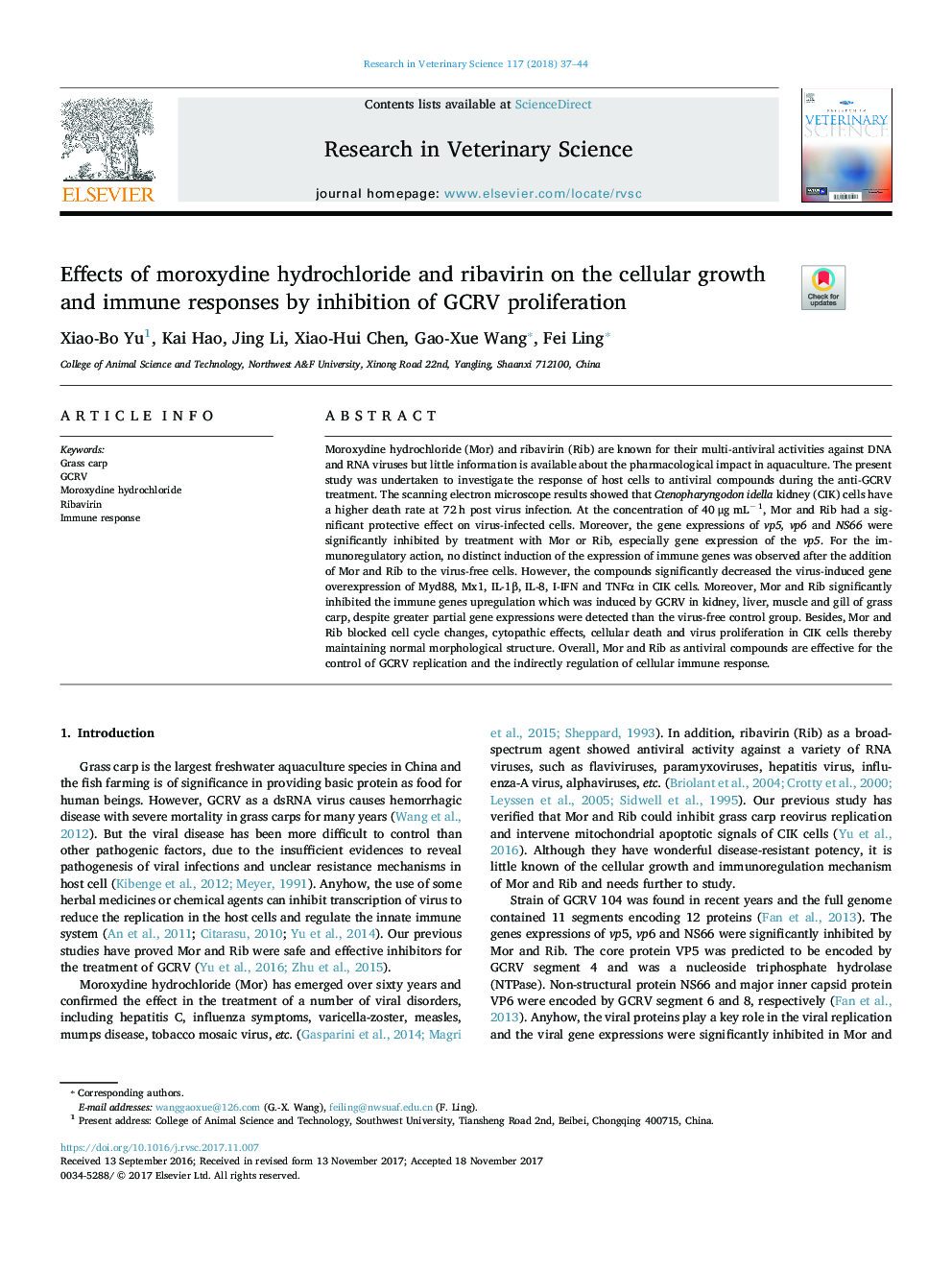| Article ID | Journal | Published Year | Pages | File Type |
|---|---|---|---|---|
| 8504028 | Research in Veterinary Science | 2018 | 8 Pages |
Abstract
Moroxydine hydrochloride (Mor) and ribavirin (Rib) are known for their multi-antiviral activities against DNA and RNA viruses but little information is available about the pharmacological impact in aquaculture. The present study was undertaken to investigate the response of host cells to antiviral compounds during the anti-GCRV treatment. The scanning electron microscope results showed that Ctenopharyngodon idella kidney (CIK) cells have a higher death rate at 72 h post virus infection. At the concentration of 40 μg mLâ 1, Mor and Rib had a significant protective effect on virus-infected cells. Moreover, the gene expressions of vp5, vp6 and NS66 were significantly inhibited by treatment with Mor or Rib, especially gene expression of the vp5. For the immunoregulatory action, no distinct induction of the expression of immune genes was observed after the addition of Mor and Rib to the virus-free cells. However, the compounds significantly decreased the virus-induced gene overexpression of Myd88, Mx1, IL-1β, IL-8, I-IFN and TNFα in CIK cells. Moreover, Mor and Rib significantly inhibited the immune genes upregulation which was induced by GCRV in kidney, liver, muscle and gill of grass carp, despite greater partial gene expressions were detected than the virus-free control group. Besides, Mor and Rib blocked cell cycle changes, cytopathic effects, cellular death and virus proliferation in CIK cells thereby maintaining normal morphological structure. Overall, Mor and Rib as antiviral compounds are effective for the control of GCRV replication and the indirectly regulation of cellular immune response.
Related Topics
Life Sciences
Agricultural and Biological Sciences
Animal Science and Zoology
Authors
Xiao-Bo Yu, Kai Hao, Jing Li, Xiao-Hui Chen, Gao-Xue Wang, Fei Ling,
